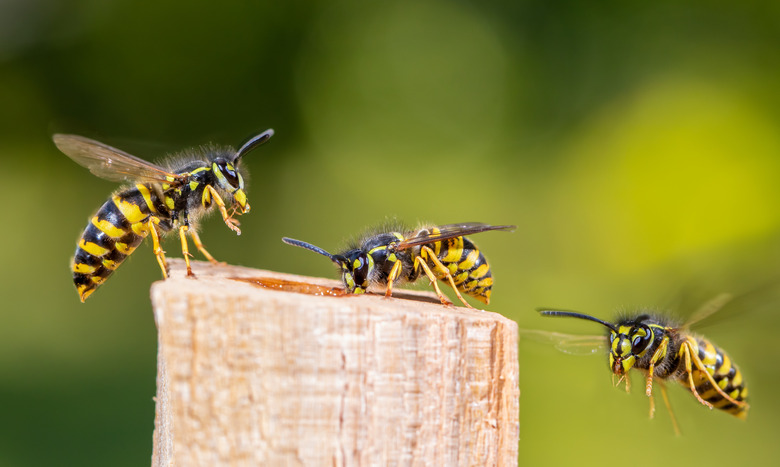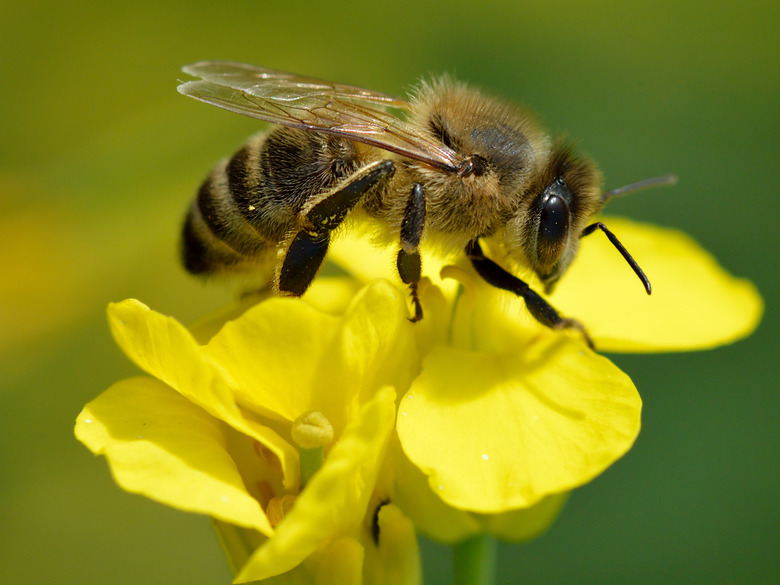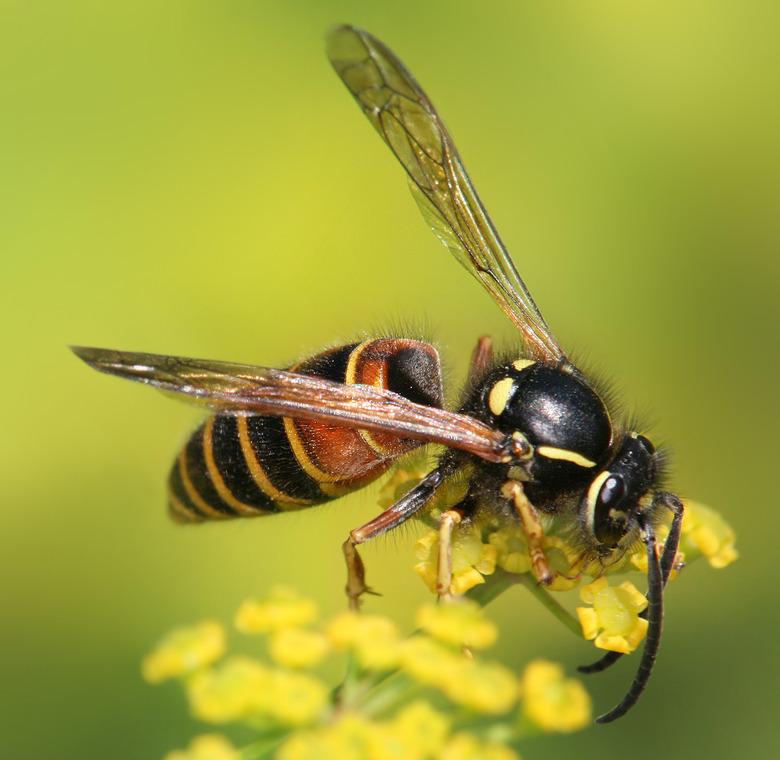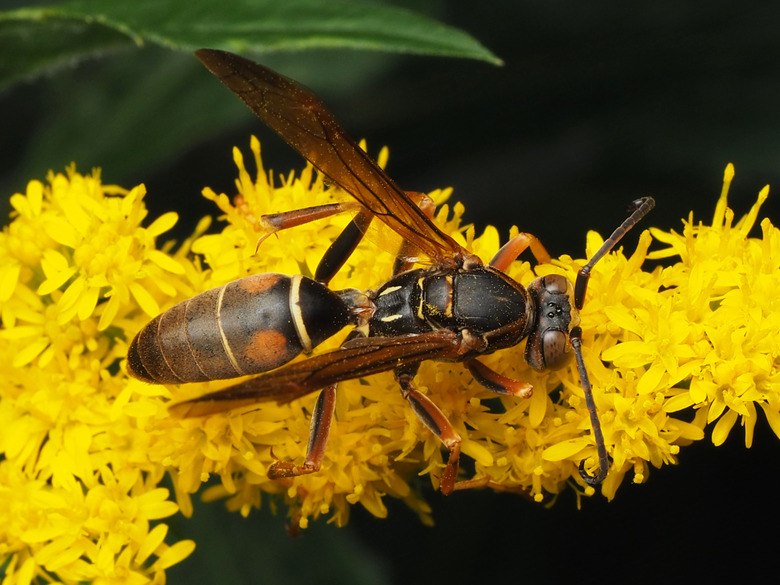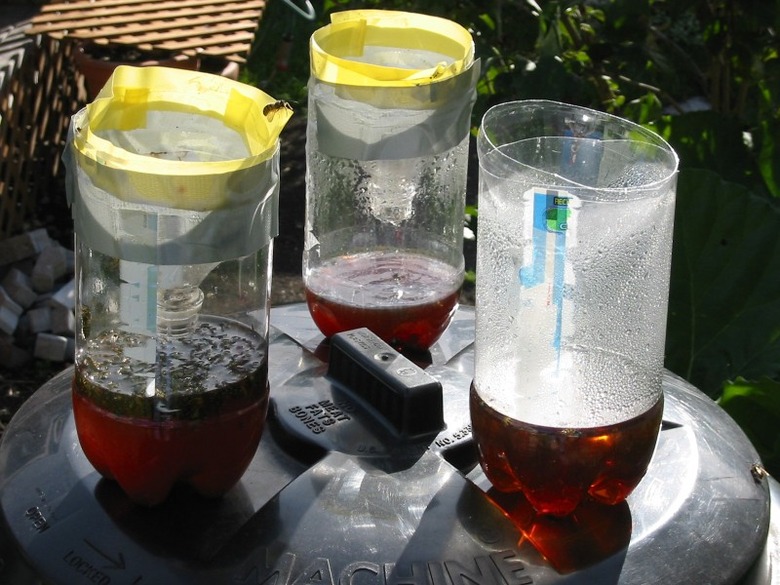How To Kill Hornets And Wasps (But Not Bees) With Beer Traps
The grill is on, side dishes are ready, the table is laid and the local wasp population is buzzing around the beverages and beers.
To prevent painful stings, consider installing beer-filled traps around the perimeter of the property, well away from the patio and picnic table.
Does alcohol kill wasps?
It does not, but a beer or carbonated beverage mixed with a few drops of dishwashing liquid can draw the stinging hornets and wasps into homemade traps.
About Bees, Hornets and Wasps
Bees, hornets and wasps primarily belong to two insect families. While the familiar honeybee (Apis mellifera) has colonized most of North America, there are 20,000 known bee species in the seven bee families, with approximately 4,000 species that are native to the United States.
In general, members of the bee superfamily (Apoidea) are desirable pollinators for flowers, fruits and vegetables in the garden.
Warning
Sensitive individuals should avoid contact with bees, hornets and wasps, since reactions range from severe swelling and shortness of breath to potentially fatal anaphylactic shock. Unlike honeybees, which can only sting once and then die, wasps have smooth stingers and can sting multiple times before flying away to sting another day.
Insect Profile: Bees and Honeybees
While there are thousands of bee species, most people think of honeybees when discussing bees. Native to Europe, the Middle East, Western Asia and Africa, honeybees were imported to North America by the European colonizers in approximately 1622.
They have since spread across North America and are prized as pollinators and for their honey production. Other bee species native to the Americas may be solitary or live in colonies and also work as pollinators. Bees are desirable members of the local ecosystem.
- **Scientific name:** Apis mellifera
- **Family:** Bee family (Apidae)
- **Common name:** Honeybee
- **Color:** Black, red-brown and golden yellow depending on the subspecies
- **Size:** 0.39 to 0.79 inch or 10 to 20 millimeters
- **Behavior:** Social/colony insects
- **Aggressive:** No
- **Pollinator:** Yes
Insect Profile: Yellowjackets, Hornets and Wasps
Yellowjackets (Vespula spp.), bald-faced hornets (Dolichovespula spp.) and paper wasps (Polistes spp.) are among the nearly 5,000 species of the wasp family (Vespidae). While there are many other wasp species, these three groups are the stinging insects that are most unwelcome in the garden.
Voracious predators of insect pests, yellowjackets, hornets and other wasps aggressively seek out meat, fruit and sugary beverages as well as viciously defend their nests against unwary humans and pets. Paper wasps also seek nectar from flowers and are beneficial pollinators.
- **Scientific names:** Vespula, Dolichovespula and Polistes species
- **Family:** Wasp family (Vespidae)
- **Common names:** Yellowjacket, bald-faced hornet, paper wasp
- **Color:** Black and yellow or creamy white depending on the species and subspecies
- **Size:** 0.39 to 0.71 inch or 10 to 18 millimeters depending on the species
- **Behavior:** Social/colony insects
- **Aggressive:** Yes
- **Pollinator:** Yes, primarily paper wasps
How to Reduce Wasps Around Your Home
To reduce the number of yellowjacket and hornet nests in the area, put out traps as soon as the weather warms in spring.
Eliminating the Queens
In general, only the queens overwinter. When the weather warms, the queens emerge and seek nourishment as they establish new nests. Eliminate the queens and there will be fewer yellowjackets and hornets by mid and late summer.
Using Commercial Products
There are commercially prepared traps for yellowjackets, both reusable and disposable, but be sure to purchase the correct trap for the yellowjacket species, either eastern or western.
While there are also wasp sprays and other toxic products, try to use wasp traps that don't kill bees so the pollinators are safe in the garden.
Creating and Maintaining Homemade Traps
In spring and summer, wasps like yellowjackets and hornets are attracted to both sugary and protein sources. Cat food, fish, meat scraps and other protein sources will draw the pests into a simple trap.
Change the bait frequently; wasps are scavengers but don't harvest rotten meat. A piece of meat suspended an inch or two over a bucket filled with water and a few drops of dishwashing liquid attracts wasps, which fall into the water and drown.
Tip
Dishwashing liquid breaks the surface tension of the water, ensuring that the wasp cannot make its way out of the bucket. Use caution when changing the bait and refilling the water bucket, as hornets and yellowjackets will aggressively protect food sources if they feel threatened.
Making a Wasp Trap
By late summer and fall, wasps are searching for sugary nourishment, including soda, beer and other beverages. Make a wasp trap using a 2-liter plastic bottle and a homemade lure.
1. Remove the cap from the plastic bottle. Discard it. 2. Cut off the upper one-third. 3. Add the bait to the bottom of the bottle. 4. Turn the top section upside down and insert it into the bottom section. 5. Secure it with staples and packing tape or duct tape. 6. Add twine or a wire to hang the trap from a fence or tree.
The lure may be leftover beer, a carbonated soda, fruit juice or a homemade solution of 1 part sugar, 2 parts each vinegar and water, a banana peel and a few drops of dishwashing liquid.
Add a little beer to homemade solutions to enhance their attraction to wasps; happily, bees and beer don't mix, so the pollinators are safe. Replenish the solution as needed to keep the stinging pests crawling inside the trap and drowning.
Hang the trap well away from the house and patio, preferably between the garden and nearby meadows or woodland where the wasps may have nests or papery hives hidden in a tree trunk, branches or eaves of another home.
Warning
Don't use sugar water or honey or add extra sugar to the solution to avoid attracting and killing beneficial bee species.
